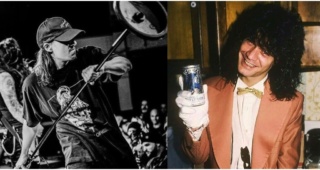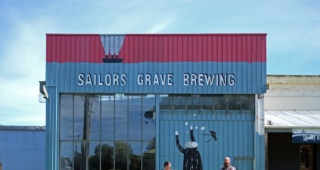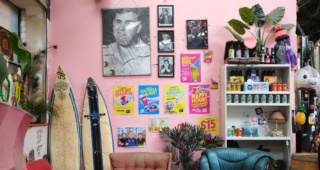Brian Curran and Rita Kao say their brewpub, Highway 11, occupies the old loading dock of an abandoned sugar factory at the center of a cool little surf town on Taiwan’s eastern coast called Dulan. They say the town looks down on black sand beaches and is backed by craggy green mountains, and that it harbors an eclectic cast of expats, artists, and craftspeople.
Being friends of friends, we all meet in Bangkok for the first time in years, coincidentally just as I’m planning a trip to Taiwan that would take me on hikes up a handful of the island nation’s nearly 100 peaks that top 3,000 meters. The couple’s enthusiastic description of their hometown, and their invitation to visit and try their beers, is reason enough to change plans and forget about the hiking.
The Road to Dulan
After landing in Taipei I head straight to Dulan, by which I mean after the flight I hop a few trains, a bus, and a taxi. Getting to Dulan takes some patience, but the overall journey is easy, particularly in comparison with the chaotic bus stations and erratic train schedules with which I’m become accustomed over the 15 years I’ve lived in Thailand.
Hungry and thirsty, I reach Highway 11 at around 10pm to find Curran behind the bar, calmly dealing with a few local Aussie expats well into their cups and ready to argue about music before I even sit down. He pours me one of the house IPAs; at just 5% ABV and less hoppy than many IPAs it’s easy to get three, maybe four down as the bar empties out. Later, Curran and I catch up with the lights off and cool ocean breeze blowing in through the bar’s open doors.
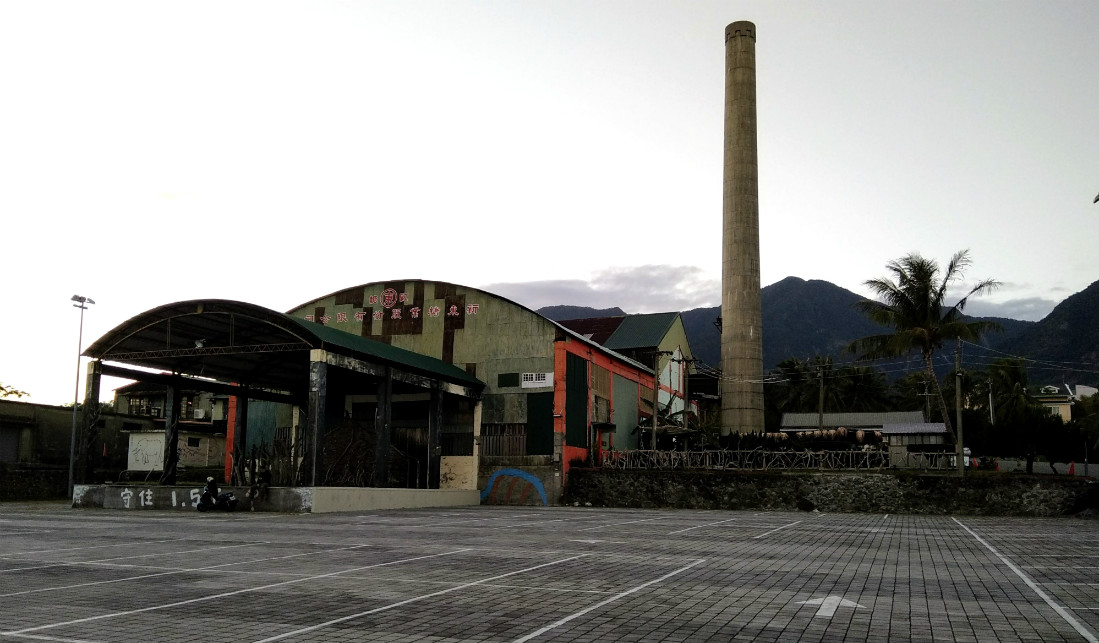

Originally from California, Curran came to Taiwan almost 20 years ago to teach English in Taipei. It was there that he met Kao, and a few years later the couple moved on to Dulan, as much for it’s artist-activist scene as for its natural beauty. They started homebrewing about seven years ago.
“Literally just woke up one day and was like, ‘Hey… I wonder how you make beer?’ Hit Youtube and beer forums for instruction. Took a bit of searching to find anywhere in Taiwan to buy some basic equipment and supplies,” Curran says. “Anyway, I started making beer and mead just to see how it’s done. Took about a year to really get my process down… a year in which friends learned to turn and walk the other way when I approached with some samples of my latest ‘breakthroughs.’”
Named after the highway that traces Taiwan’s eastern coast, Highway 11 and its attached boutique are a reflection of the DIY aesthetic that brought the pair together years ago. Both now in their mid- to late-forties, they still practice the same kind of hands-on activism that inspired them growing up amidst the ‘90s alternative music scene. Curran, with his shaved head and rock t-shirts, and Kao, who seems to always wear a multi-layered collection of flowing colors, work together with local artists, craftspeople, and chefs to keep the old Hsin Dong Sugar Factory at the center of Dulan’s cultural scene through a variety of regular performances and exhibitions.
Lay of the Land
The next morning I wake to temperatures cool enough to walk the cliffs and black sand beaches for five hours without breaking a sweat, but still warm enough to strip off for a plunge into the sea later in the afternoon. Waves crest over three meters, and as I sit drying off among the scattered stones and boulders I watch kiters and windsurfers beat against the surf on a stiff wind.
There is an assortment of places to stay on this windy coast, from Dulan Cape Café, its cliffside shipping container rooms offering million-dollar views, to Black Boss Camping, where one can pitch a tent or rent a trailer in a place that feels like a cross between a cartoon magic garden and a militia settlement, complete with outdoor bathtubs, arc welders, and ATVs.
Related: Seven Questions with Taipei Craft Beer Pioneer Shawn Dean James Kidd
Later that afternoon I head back to the sugar factory to check out Kao’s shop, Highway 11 Open Studio, which stocks a good variety of locally sourced goods and clothing. There are wall paintings, hand-shaped surfboards, books, jewelry, and much more. Head-high peek-a-boo walls reveal the guts of the monster machine that once rendered plants into table sugar. The contrast between this bright and airy space and the rest of the decrepit old building is stark.
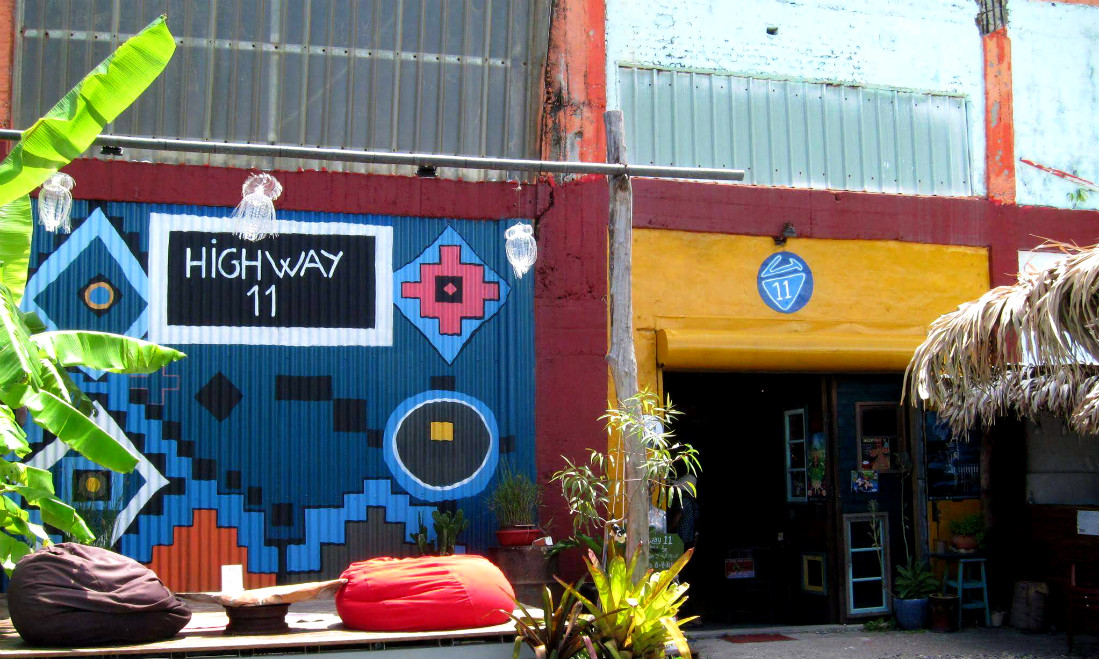
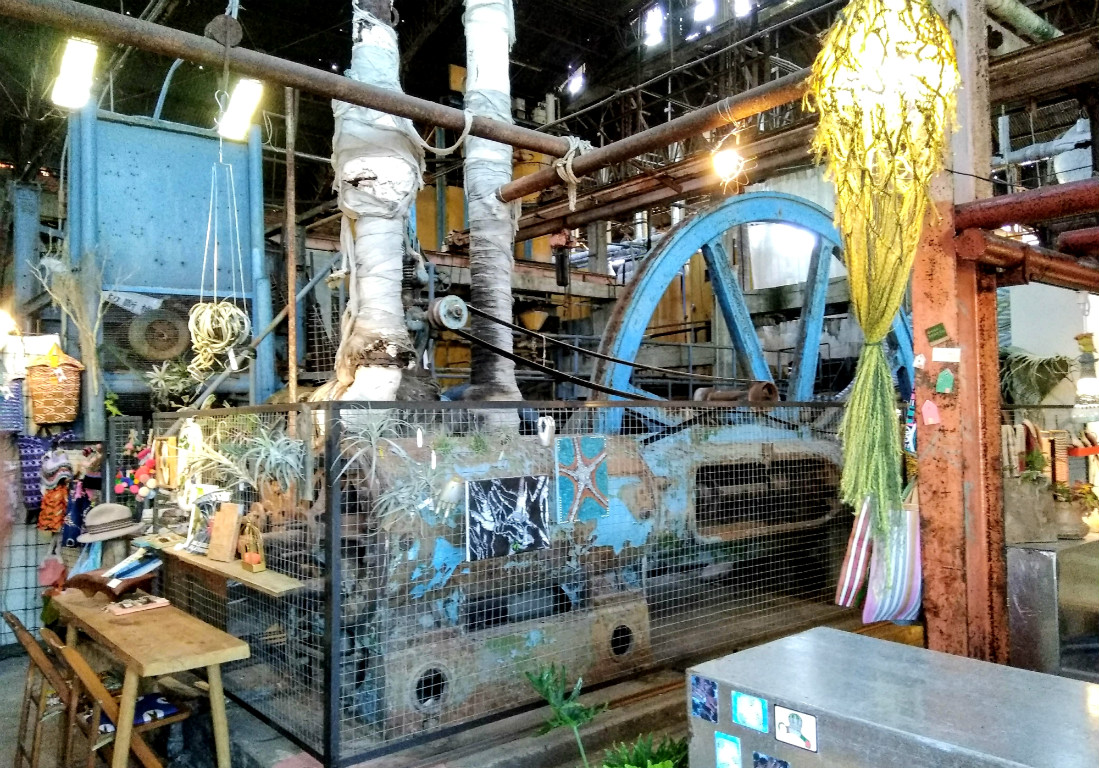
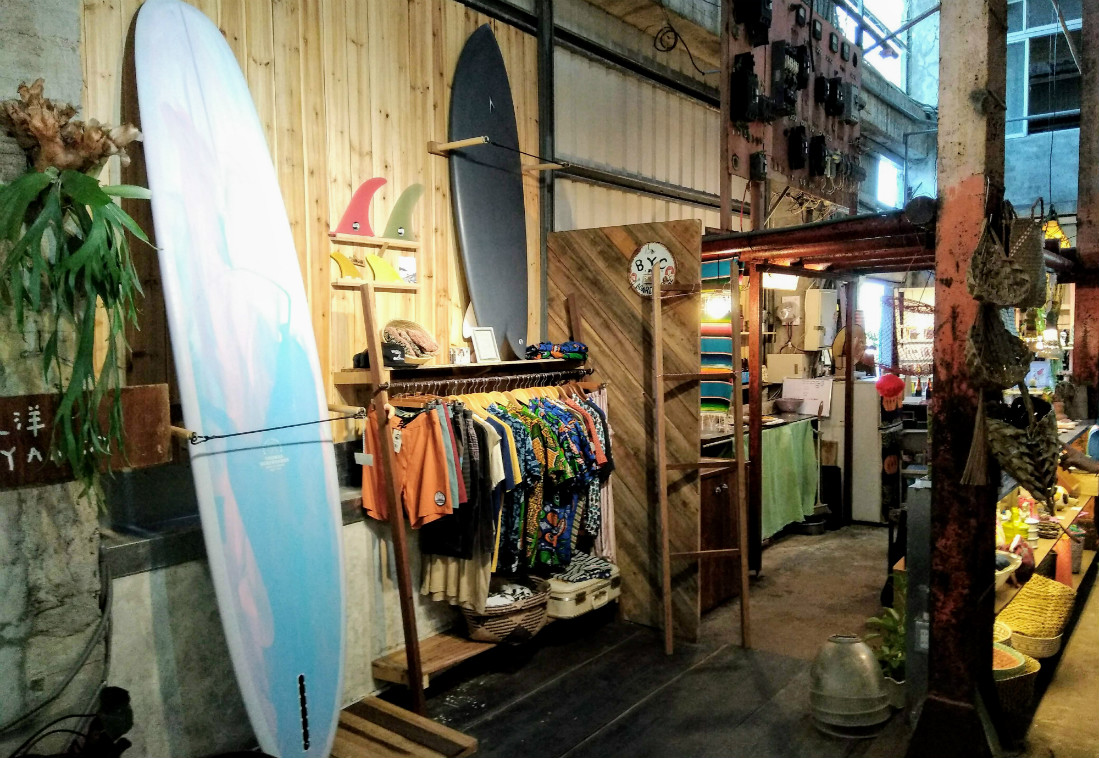
Curran and Kao began selling their beers during weekend cultural events at the factory. “We would set up a little stand with a cooler or two of cold brews on Saturday nights,” Curran says. “I think we did that for about a year until we got sick of setting up and packing up every week. We’d known the factory’s owner for more than a decade, so we leveraged that relationship into securing the spot where our bar is now.”
Building a bar in the loading dock of a factory that had been closed for 40 or 50 years took some doing. “We did a bit of renovating; put up the inner ceiling, built a couple of walls, installed plumbing and lighting, et cetera, then pretty much opened for biz,” Curran says.
At the same time they had to figure out how to brew their most popular beers in larger quantities while navigating the legal issues of doing so. “You can’t actually just make beer in your house and sell it.”
The obvious path of investing in large-scale brewing equipment and renting a space big enough to accommodate it wasn’t an option. Instead, the couple hit the road in search of brewers willing to make the beers for them—without making any tweaks to recipes they felt were perfected. “Took a few tries, but we did finally find one willing to follow my recipes,” Curran says. “As you can imagine brewers, like chefs, can be a pretty egotistic bunch, each of them convinced they know the ‘right way’ to do things. That’s an indictment of myself and the people with whom I was cajoling, though, I guess.”

Today Highway 11 commissions about 5,000 bottles every 10 months of the IPA and lemon wheat ale from a host brewery. Curran makes smaller, more frequent batches of its stout, mead, and honey-ginger beers at the bar. Replications of Kao’s original paintings adorn the bottle labels.
The Elements
On the morning of the annual Taiwan Open of Surfing, the gusty first winds of a typhoon bring rain and push waves over four meters high. The week-long competition is broken into three groups of qualifying heats, followed by world juniors and ending with longboarding. Women’s longboarding is first up when I arrive, but the day doesn’t get off to a promising start.
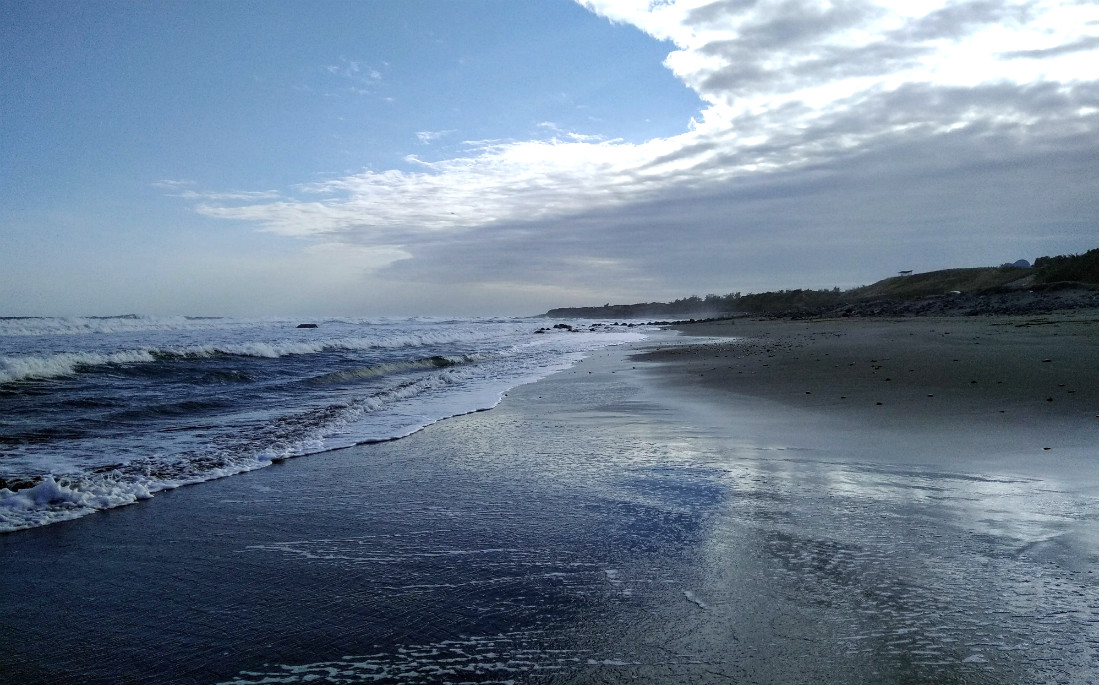
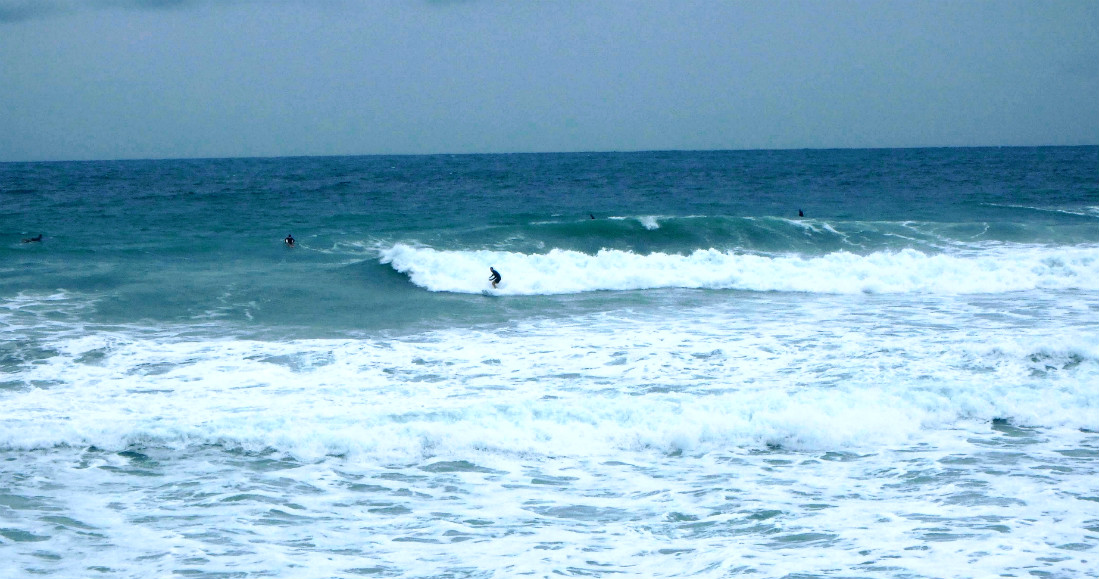
The water is so rough that no surfer in the first three heats manages to paddle out past the break, each of them instead opting to score whatever points possible on the inside. As the rain picks up the crowds migrate from the beach to the barbecue food stalls, leaving mostly photographers to take in the competition. Locals clad in everything from beachwear to parkas crowd a national macrobrewery beer tent, waving bills in the pissing rain for plastic cups of pissy lager. I pass.
I leave the competition and take off uphill on a little Taiwanese Kymco motorcycle Curran loans me, stopping at Smile Café for a late lunch. Bacon, kimchi, chicken nuggets—the owner here is happy to fold just about anything into a scallion pancake. I pair one with a deep-bellied bowl of soup that’s full of surprises, as well as a bottle of Highway 11’s lemon wheat ale, a light and tangy beer that pairs nicely with a big, greasy meal on a rainy afternoon.
Related: Two Nights of Craft Beer Bars and Breweries in South Korea’s Second City
After lunch I hop back on the Kymco and take a random right out of town and up into lush mountainside country. The area is filled with vegetable gardens bordering small, blocky concrete houses showing wear and tear from the fierce storms that batter this coastal region. Surprisingly the roads, coiling through the hills like a snake, are in fine condition, but the old Kymco and its two gears—neither of which ever seemed to be the right one—is not up to the challenge.
With heavier, darker clouds on the horizon over the sea, I decide against further exploration of these steep, winding roads on this borrowed little death machine and head back to the sugar factory.
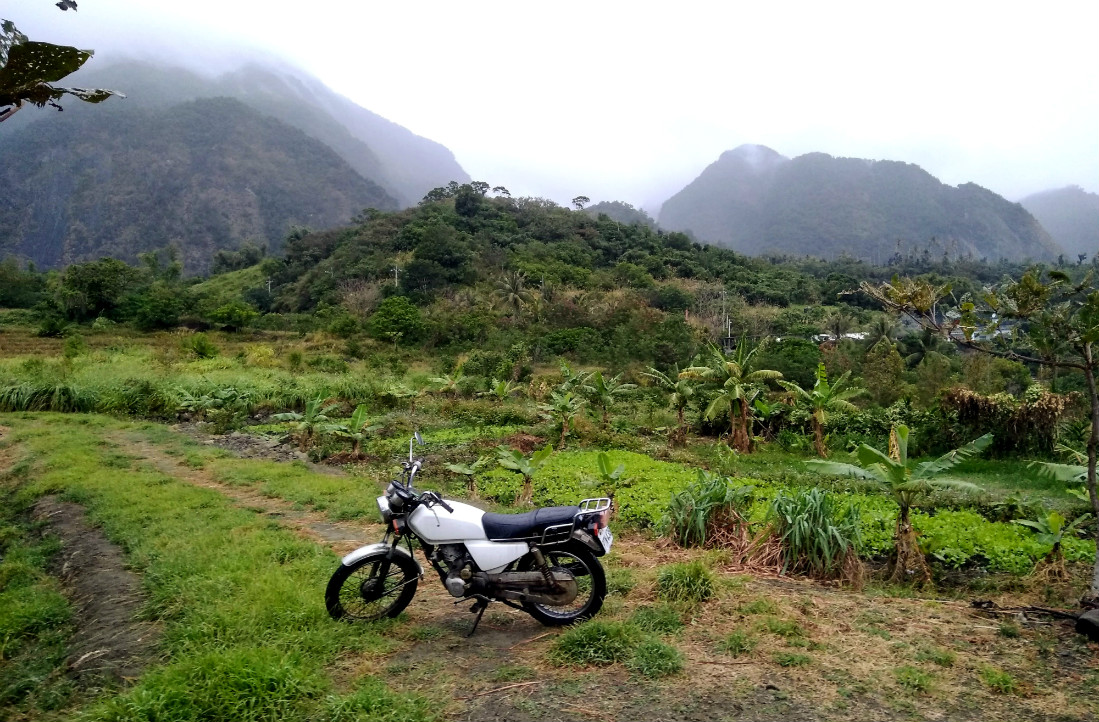
I’m soaking wet by the time I get there. It’s Saturday, which means a band is setting up and Curran is directing the chaos in full-on manager mode. I’m about to order a coffee oatmeal stout, but notice there’s honey mead on tap. According to all the medieval novels I’ve read mead is the right drink for drying off in a tavern, so it’s an easy choice. Passion fruit, vanilla, and tangerine are just a few of the local ingredients Curran uses to infuse his housemade mead, which at 13% I find far too easy to drink.
I switch back to the session IPA and take a seat near the fire as under a light drizzle the band rips into ‘90s cover songs.
The Next Wave
There isn’t much craft beer in Dulan; everything I find comes from Highway 11. “We’ve got a fairly smooth situation now with the bar, and our outside sales are increasing, but in the near future I’d like to focus more on mead,” Curran says. “The Taiwan craft beer market is already pretty saturated. There are quite a few local folks doing it now, plus more and more imports. Hard to really stand out in that crowd.”
“A bonus with the mead is that you need far less—and far less expensive—equipment to get a legal enterprise going, though there is still the slog through the Kafka maze of bureaucracy. Ideally we’d get that going and spearhead a mead movement.”
I only have four days in Dulan, but am already planning my next visit. There are waves to catch, more local art to see, and more beers and meads at Highway 11 to drink. Maybe I’ll even get some hiking in.
###
Highway 11 is located at Hsin Dong Sugar Factory, Dulan Village, Taitung, Taiwan. (map) +886 978 092 087. Open Wednesday to Friday 6pm – 10pm, Saturday 12pm – 11pm, Sunday 12pm – 10pm. Closed Monday and Tuesday.
All photos taken by author, with the exception of the bottles photo provided by Highway 11.



